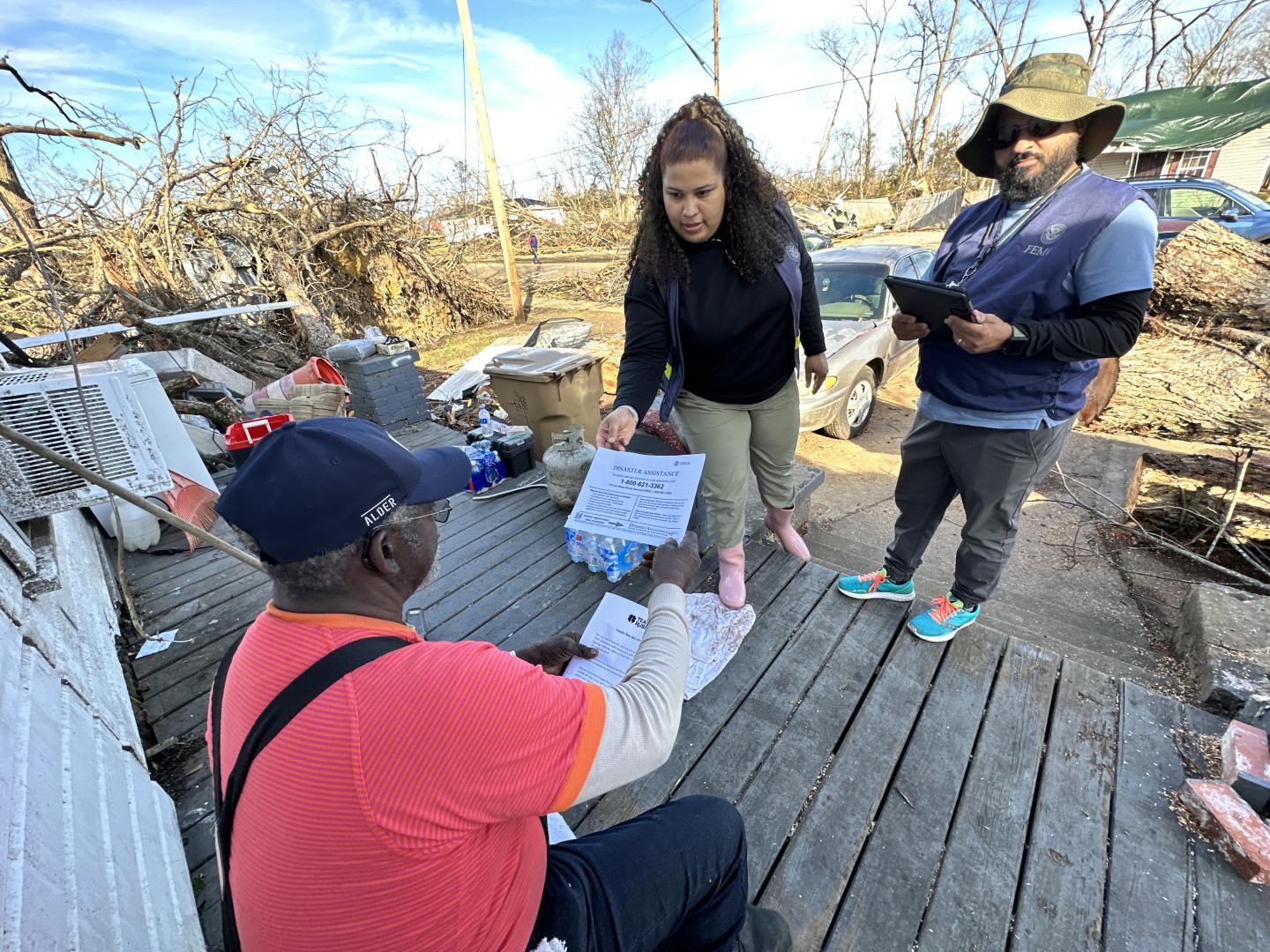
*These changes apply to disasters declared on or after March 22, 2024.
We made major changes to our Individual Assistance (IA) programs to address historic challenges faced by disaster survivors.
These updates include:

*Flexible funding provided directly to survivors when they need it most.

*Expanded eligibility to help more people recover faster.

*Simplified application process to meet survivors’ individual needs.

Easier-to-navigate websites to apply for assistance and transitional shelter.
Flexible Funding (New Benefits)
Serious Needs Assistance
Money to help you pay for essential items like food, water, baby formula, breastfeeding supplies, medication and other emergency supplies.
Displacement Assistance
Money to help with immediate housing needs if you cannot return to your home because of the disaster.
The money can be used to stay in a hotel, with family and friends, or other options while you look for a rental unit.
Expanded Eligibility

Simplified Other Needs Assistance
FEMA no longer requires survivors to apply for a U.S. Small Business Administration (SBA) loan before being considered for certain types of assistance.
Survivors now have the option to apply for a low-interest SBA loan at the same time they apply for FEMA assistance.
Help Underinsured People
If you received an insurance payout that did not cover the cost of damage to your home or property, you may still be eligible to receive money from FEMA.
Keep in mind, FEMA assistance is not a replacement for home, renters or flood insurance, and will not cover all losses from a disaster.
Expanded Criteria for Home Repair Assistance
You may receive money to repair the parts of your home damaged by the disaster regardless of pre-existing conditions. You can also make repairs that prevent similar damage from future disasters.
Made Accessibility Improvements
Money to help you make accessibility repairs to your home (such as exterior ramp, grab bars, and paved path to the home entrance) if you have a disability.
Repairs can be made when these items are damaged during a disaster. Improvements to the home can be made when these features were not present before the disaster but are needed due to a pre-existing disability or a disability caused by the disaster.
Simplified Assistance for Self-employed Applicants
If you are self-employed, FEMA may offer money to repair or replace the disaster-damaged tools and equipment needed to do your job.
Expanded Assistance for Computing Devices
You may now receive money for a personal or family computer that is damaged by a disaster. You may also receive money for additional computers required for work, school or access and functional needs.
Simplified Application Process

Streamlined Temporary Housing Assistance Applications
Reduced documentation requirements if you are seeking continued temporary housing assistance. Individual caseworkers will engage closely with you to offer support and increase transparency.
Removed Barriers for Late Applicants
If you are requesting approval for a late application, you no longer have to provide documentation supporting the reason for your late application.
Simplify the Process for Appeals
If you disagree with a FEMA decision and wish to appeal, you will no longer need to provide a signed, written appeal letter to accompany the supporting documentation.

Enhancing FEMA’s DisasterAssistance.gov and Transitional Sheltering Assistance Websites
FEMA has made the DisasterAssistance.gov and Transitional Sheltering Assistance websites more accessible and easier to navigate for survivors.
Streamlining the DisasterAssistance.gov Website
New updates to the fully reimagined Disasterassistance.gov website have made applying for disaster assistance faster than ever. The online application now provides survivors with easy navigation, visual progress tracking and individualized information collection. For example, survivors now are only prompted to answer questions that apply to their specific circumstances. This change will reduce time burdens for survivors post-disaster, when they are in greatest need and the most overwhelmed. For most disaster survivors, this change is expected to reduce the registration time by more than 15%.
Improving the Transitional Sheltering Assistance Website
Survivors will find it easier to utilize FEMA's Transitional Sheltering Assistance program to book lodging and contact participating hotels directly to find temporary lodging solutions. Prior to the updates, survivors would find an unfiltered list of lodging options. Now, the website provides photos and user-friendly sort and filter features. Updates have also been made to improve user experience on mobile devices, making the process easier for survivors to navigate and find lodging.
Explore the New TSA Locator Site


